NOVEMBER 28, 2018
 Monday, November 26, 2018 at 03:19PM
Monday, November 26, 2018 at 03:19PM 
All you need to know about the third-generation model of the Bentley GT Convertible: It's more luxurious, it has a 626HP W12 with 664 lb.ft. of torque, eight-speed dual-clutch transmission and a suite of the latest chassis technologies, it's 20 percent lighter, five percent stiffer and it goes 0-100 km/h in 3.8 seconds with a top speed of 207 mph. How much? The price hasn't been announced yet.
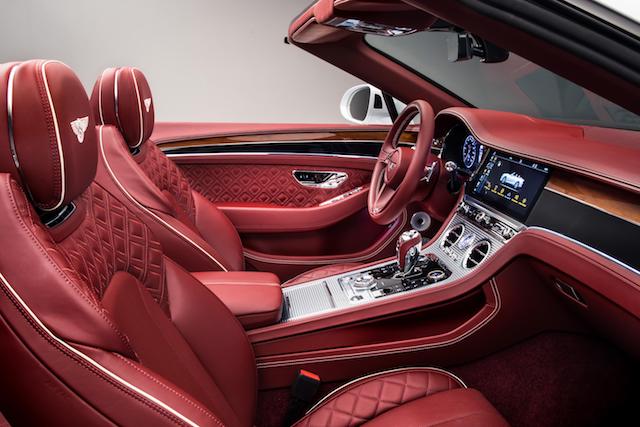

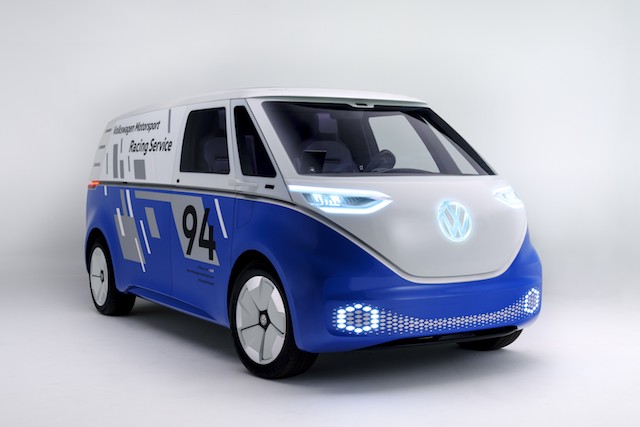
(Volkswagen images)
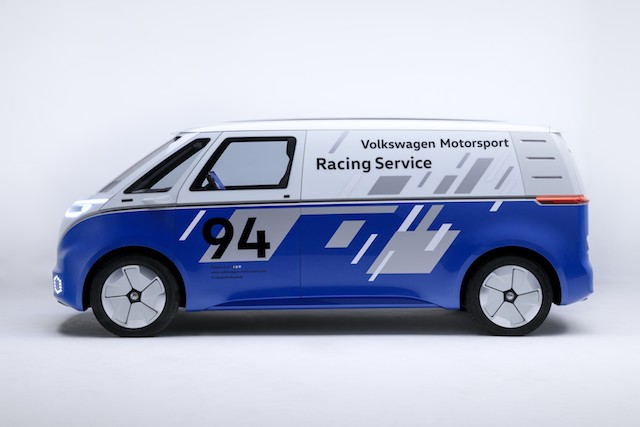
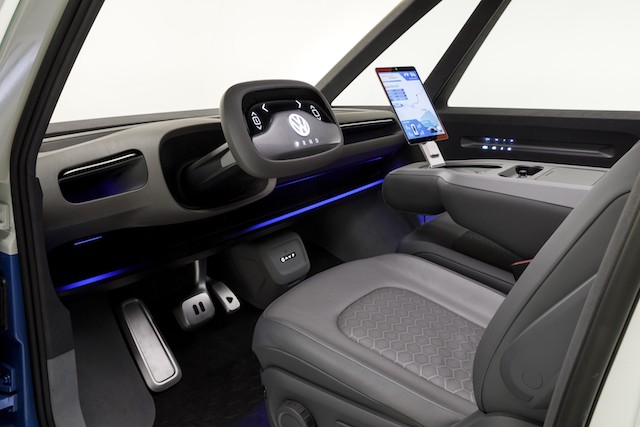

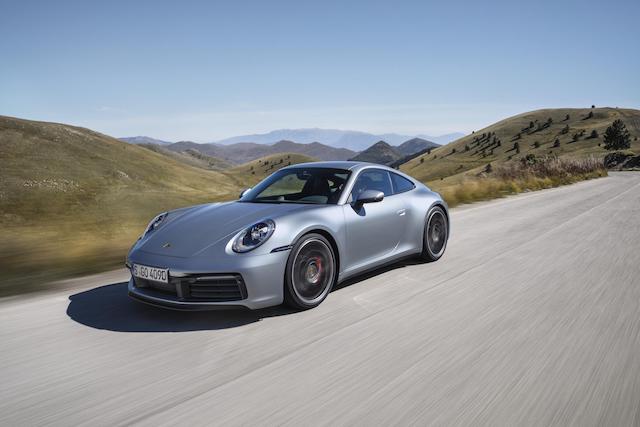
The 2020 Porsche 911 has been unveiled at the L.A. Auto Show. The turbocharged flat-six in the 911 Carrera S and 911 Carrera 4S now produces 443HP, an increase of 23HP compared with the previous model. Equipped with the 8-speed PDK dual clutch transmission as standard, the rear-wheel-drive 911 Carrera S Coupe gets to 60 mph in 3.5 seconds from a standstill, and the 911 Carrera 4S Coupe with all-wheel drive takes 3.4 seconds. Both cars are 0.4 seconds faster than the previous model in each case, a time that is increased by a further 0.2 seconds with the optional Sport Chrono Package. The top track speeds are now 191 miles per hour (911 Carrera S) and 190 miles per hour for the all-wheel-drive version. A manual transmission will be offered at a later date.
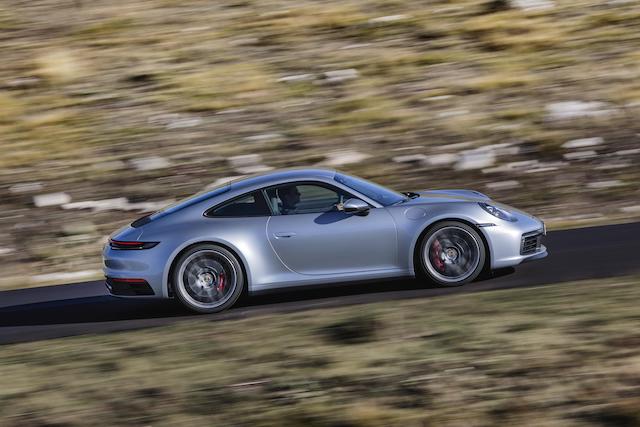 The new car is wider and looks bigger overall, as the days of the taut little 911 have been relegated to the dustbin of history for a while now. The new Porsche 911 is significantly wider with wheel housings arching over large 20-inch front wheels and 21-inch rear wheels. At the front, the body width has increased by 45 millimeters (1.77 inches), making room for a wider front track. And the rear body width on both 911 Carrera S and 911 Carrera 4S has increased to 1,852 mm (72.91 in), the width of the previous 911 Carrera 4 and 911 GTS models. Flush integration of the electric door handles that extend outward when needed is part of the new design look. Porsche says that between the new LED headlights, the front luggage compartment lid with pronounced contours evokes the design of the first 911 generations (I guess you have to squint to see that). The rear is dominated by the significantly wider, variable-position rear spoiler and the now Porsche signature light bar, which is now a feature on both two- and four-wheel drive variants. With the exception of the front and rear fascias, the entire outer skin is now made of aluminum.
The new car is wider and looks bigger overall, as the days of the taut little 911 have been relegated to the dustbin of history for a while now. The new Porsche 911 is significantly wider with wheel housings arching over large 20-inch front wheels and 21-inch rear wheels. At the front, the body width has increased by 45 millimeters (1.77 inches), making room for a wider front track. And the rear body width on both 911 Carrera S and 911 Carrera 4S has increased to 1,852 mm (72.91 in), the width of the previous 911 Carrera 4 and 911 GTS models. Flush integration of the electric door handles that extend outward when needed is part of the new design look. Porsche says that between the new LED headlights, the front luggage compartment lid with pronounced contours evokes the design of the first 911 generations (I guess you have to squint to see that). The rear is dominated by the significantly wider, variable-position rear spoiler and the now Porsche signature light bar, which is now a feature on both two- and four-wheel drive variants. With the exception of the front and rear fascias, the entire outer skin is now made of aluminum.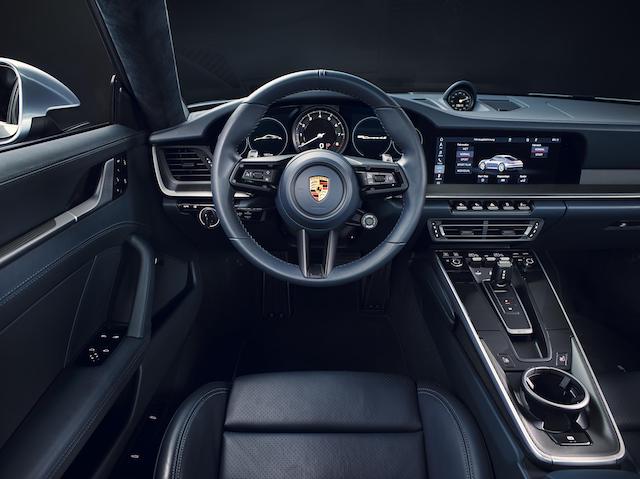 The completely new interior was inspired by 911 models from the 1970s, according to Porsche. Left and right of the centrally positioned tachometer, two thin, frame-less, free-form displays provide the driver with information. The PCM can be operated quickly and intuitively, thanks to the new architecture. Located underneath the screen, a compact switch panel with five buttons provides direct access to key vehicle functions. In terms of digitalization, the 911 is more connected than ever before, thanks to new functions and services. The standard PCM system features Porsche Connect Plus, including online traffic information based on swarm data. (A subscription is required after an initial 12-month trial period.)
The completely new interior was inspired by 911 models from the 1970s, according to Porsche. Left and right of the centrally positioned tachometer, two thin, frame-less, free-form displays provide the driver with information. The PCM can be operated quickly and intuitively, thanks to the new architecture. Located underneath the screen, a compact switch panel with five buttons provides direct access to key vehicle functions. In terms of digitalization, the 911 is more connected than ever before, thanks to new functions and services. The standard PCM system features Porsche Connect Plus, including online traffic information based on swarm data. (A subscription is required after an initial 12-month trial period.)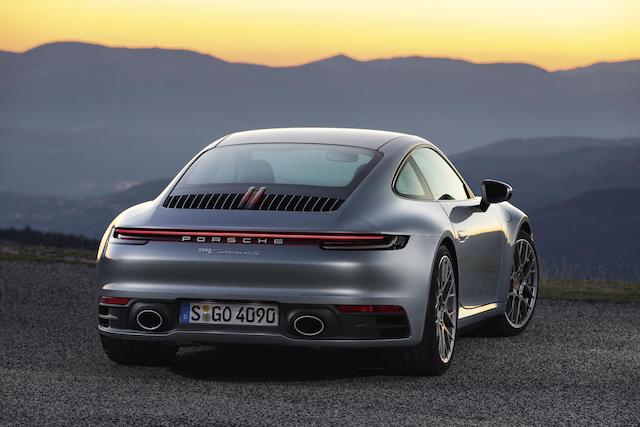 As a world first, Porsche has developed the Wet Mode, which is included as standard equipment on the new Porsche 911. This function detects water on the road, preconditions the stability control and anti-lock brake systems accordingly, and warns the driver. A camera-based warning and brake assist system, also fitted as standard, detects the risk of collision with moving objects and initiates emergency braking if necessary. Night Vision Assist with a thermal imaging camera is optionally available for the 911 for the first time. The Adaptive Cruise Control option includes automatic distance control, stop-and-go functionality, and an innovative Emergency Assist function.
As a world first, Porsche has developed the Wet Mode, which is included as standard equipment on the new Porsche 911. This function detects water on the road, preconditions the stability control and anti-lock brake systems accordingly, and warns the driver. A camera-based warning and brake assist system, also fitted as standard, detects the risk of collision with moving objects and initiates emergency braking if necessary. Night Vision Assist with a thermal imaging camera is optionally available for the 911 for the first time. The Adaptive Cruise Control option includes automatic distance control, stop-and-go functionality, and an innovative Emergency Assist function.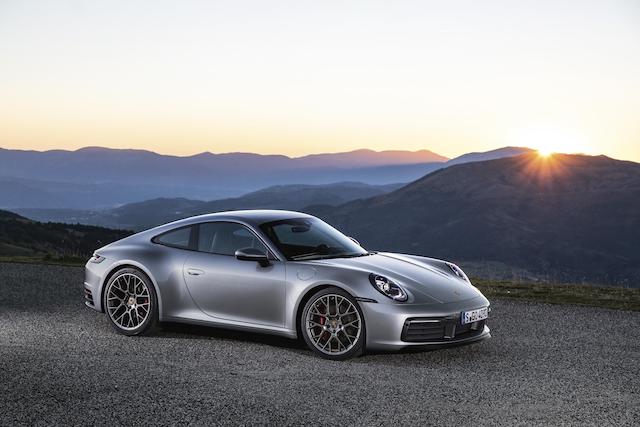 The 2020 911 Carrera S has a base MSRP of $113,200, while the 2020 911 Carrera 4S starts at $120,600, each not including the $1,050 delivery, processing and handling fee. The models can be ordered now and are expected to reach U.S. dealers in summer 2019.
The 2020 911 Carrera S has a base MSRP of $113,200, while the 2020 911 Carrera 4S starts at $120,600, each not including the $1,050 delivery, processing and handling fee. The models can be ordered now and are expected to reach U.S. dealers in summer 2019.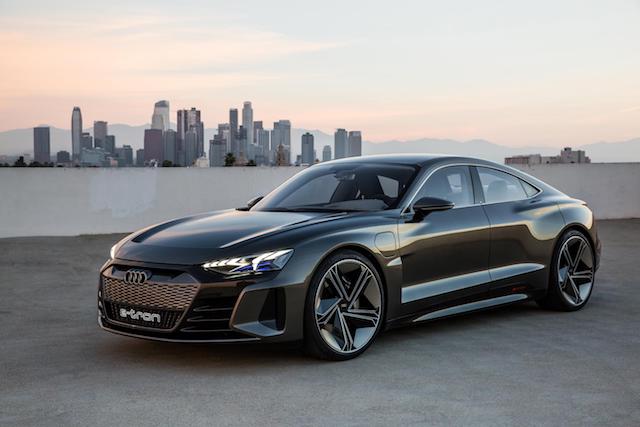
Editor-in-Chief's Note: Judging by the looks of the Audi E-Tron GT Concept, the VW Group is going to have difficulty separating its premium fully-electric entries in the market. Clearly Audi's version of the Porsche Taycan, the Audi E-Tron GT Concept basically shares all things Taycan underneath. (And for the record, we refuse to use Audi's lower case nomenclature "e-tron" because it's tedious and stupid.) Audi PR minions say that, "The technology in this automobile was developed in collaboration with Porsche" - no shit - and that "the design and character of the e-tron GT concept are packed full of unmistakable Audi DNA." Whatever. Look for it in-market sometime in 2021. -PMD
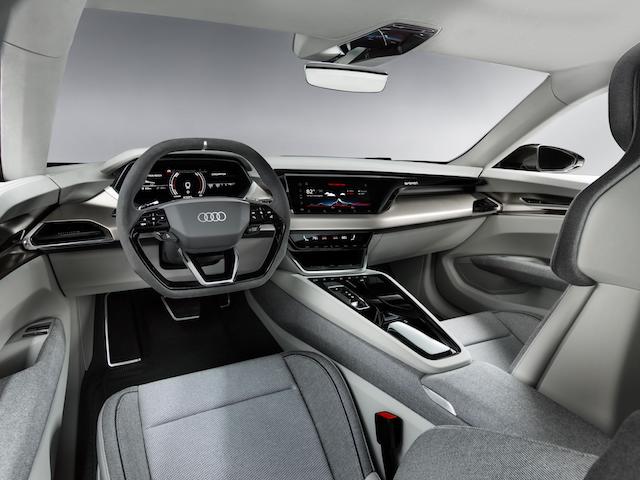
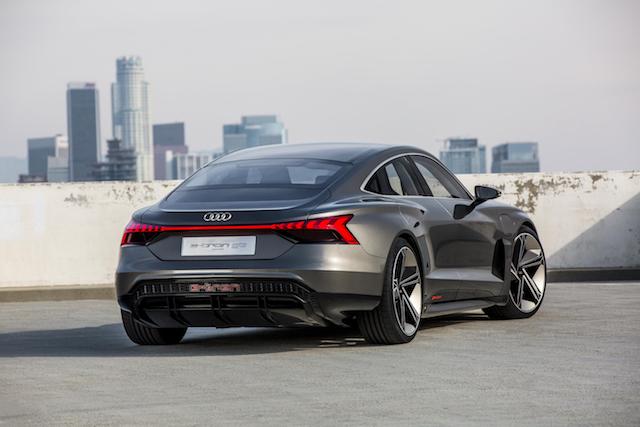
AE "Duh" Headline of the Week: "Snow might hamper ability to scoot on electric scooters" appeared in the Detroit Free Press on Wednesday.
Editor's Note: AE had the chance earlier this month to attend the Financial Times' Future of the Car Summit in Detroit. We sent our favorite researcher and consumer strategist, Allen Bukoff, to check it out. Here is his report. -WG
Financial Times’ Future of the Car Summit, Detroit, November 8, 2018
By Allen Bukoff, PhD
Detroit. There probably has never been a time in the auto industry when so many different major forces for change have been swirling around and through it. This has created two major intellectual challenges: 1. understanding each of these forces and how they are likely to work together and 2. developing a broader view about what is going to be affected. Most people, even in the auto industry, are still treating what’s going on with electric vehicles, for example, as being just a product variation of the traditional automobile, when what’s going on is a whole lot bigger than that – a new product category that is bringing a new transportation revolution with it. Thankfully, conferences like Financial Times’ Future of the Car Summit are pushing the broader, deeper view.
Attending this conference gave us the opportunity to assess where there is (and is not) some consensus about the future of transportation.
Consensus about the major forces we are dealing with
-
the rise of EVs (all-electric vehicles)
-
the rise of AVs (autonomous vehicles) – sensors and artificial intelligence
-
the expansion and evolution of Transportation as a Service (e.g., “e-hailing,” Uber, Lyft, and Maven)
-
the growth and expansion of Connectivity (the digital infrastructure making AVs and Transportation as a Service viable)
-
the Global Scope – all of these forces are playing out on a global stage
| [Author’s note: The best and deepest exploration and projection that we’ve seen about how these forces are rapidly coming together (often multiplying each other’s effect!) is still the 2017 RethinkX report (free to download here ). Nearly everything we heard at the Future of the Car Summit aligned with the overall RethinkX analysis, although not with the aggressiveness of its timetable.] |
Consensus about the scope of what is going to be effected:
On top of the intellectual challenge of getting our brains and our planning around the unprecedented confluence of these major forces is the challenge of widening our vision about the scope of what is being affected (it’s more than just the auto industry and it’s happening on a global scale!):
-
Human mobility and transport. The confluence of these major forces is prompting a broad reconsideration of human mobility and transport and challenging all the players to take a broader view that encompasses private, commercial, and public transportation, “micromobility” (e,g., scooters, ebikes), e-hailing and Transportation as a Service, all supported by an increasing use of connectivity, data, and software.
-
Product disruption. Moving from ICE vehicles (for the last 100 years) to EVs to EV-AVs; from personal vehicles to shared-vehicle fleets.
-
Business-model disruption. You’re not just in the car business anymore! From OEMs and dealers, to transportation providers and OEMs; from commercial drivers to driverless delivery vehicles.
-
Lifestyle disruption. This is going to change how many of us have been living (e.g., small private vehicle fleets and a greater use of transportation services), and give new, better, and more affordable transportation options to billions of people who have few options now.
-
Urban disruption. Some of the future scenarios predict increased congestion requiring government intervention and regulation. Other scenarios predict major improvements in urban living and mobility. City planners around the world are watching.
OTHER TAKEAWAYS FROM THE SUMMIT
It’s not about the environment, it’s the economics. Many people still think that the push for electric vehicles is being driven by environmental concerns such as the growing threat of climate change. Although passenger vehicles and heavy-duty trucks are a major source of air pollution and climate change, the environmental benefits are not the main factor driving the push to EVs, AVs, and Transportation as a Service. Economics is the real driver. Electric vehicles are mechanically simpler, easier, and cheaper to build and maintain (electric motors have many fewer parts than internal combustion engines). Electricity can be managed and used much more efficiently than burning petroleum. Electricity can be generated from solar and wind power. The main stickler with EVs has been the cost and capacity/range of the batteries. The batteries are by far the costliest component of current EVs. But the price of batteries is coming down at the same time that the capacity/range is going up. Everyone is now projecting that even without any major new breaththroughs in battery technology, EVs will be cheaper to manufacture (and buy!) than the equivalent ICE vehicle. There doesn’t appear to be a strong consensus yet on when this cost tipping-point is likely to happen, but it’s a lot sooner than anyone was thinking even five years ago. This is why so many analysts have become so bullish on EVs. They appear to be economically inevitable. Consumers and fleet owners ARE going to be buying EVs because they are cheaper to buy, cheaper to run (an electric mile is much cheaper than a gasoline or diesel mile), and cheaper to maintain (fewer parts, longer lasting, no oil changes, etc.). The push to autonomous vehicles is also being driven by economics: remove the human driver from an Uber or Lyft and you’ve got a major drop in the cost of providing transportation. If AVs can be developed to be much safer than human drivers, insurance costs will fall as well.
Public-charging infrastructure. Before the Chevrolet Volt and Tesla Model S were introduced, the reigning conventional wisdom was that EVs would never be feasible – would never take off – until there was a large nationwide infrastructure of public charging stations. You wouldn’t be able to use an EV for daily driving unless there was a public charging station at work, at the grocery store, and at frequent locations along our major interstates and highways. The Volt cleverly eliminated the constraint of limited battery range by adding an onboard gas-powered electric generator as backup, and the Tesla Model S challenged it from the beginning with a 208 mile range (now up to 335). Charging your EV only at home has been good enough to make the latest EVs feasible daily drivers for tens of thousands of consumers.
Nevertheless, the belief persists among the non-EV-owning public that the lack of out-of-home charging infrastructure is a serious problem and is cited as a major reason deterring them from considering an EV at this time. Tesla continues to expand its Supercharging Network nationally between key cities (e.g., Los Angeles and San Francisco) to support long-distance trips by Tesla owners. A variety of other companies are also busy installing public charging infrastructure (the VW-funded Electrify America has begun installing charging stations at Walmarts). If you go to one of the websites that shows public charging stations (e.g.,PlugInAmerica, PlugShare), you’ll probably be surprised at how many EV charging stations are already available in and around your metro area. The time it takes to charge an EV is also coming down dramatically. Charging stations that can give you 20 miles of range for a three-minute charge (200 miles for a half-hour charge) are on their way. Given how easy it is to charge at home, how few long distance roadtrips most people take, and the growing availability of charging stations, there doesn’t seem to be consensus yet on how close or faraway we are from having “enough” public-charging infrastructure.
The Speed of Adoption -- Consumers and the Push/Pull Puzzle. There seems to be more contradiction than consensus about the role that automotive consumers are playing, should play, and will play in the adoption of EVs, AVs, and Transportation as a Service. Some are just expecting consumers to muddle through all these changes just fine and others are worried that consumers are going to need much more assistance -- education and guidance (including incentives?) -- to get up to speed and to navigate well in this new terrain.
On the one hand we have the traditional free-market faith that individual consumers will seek out information and rationally weigh all the costs and benefits against their needs and resources, and that this will properly guide the market and shape the future. But EVs, AVs, and the variety of transportation services that the future is bringing are a bigger challenge than your average automotive consumer has ever experienced (and most consumers and automotive marketers don’t seem to have realized this yet). EVs themselves (let alone AVs and Transportation as a Service options) are confronting consumers with a new and unknown product category and user experience.
The consumers who have already made the leap almost universally love their EVs and their EV experience (and say their next vehicle will also be an EV). Everyone else seems to be wary, put off by some of the “negatives” they’ve heard about, many of which – like limited range, slow charging, lack of public charging stations, and vehicle cost – are increasingly inaccurate exaggerations. They either haven’t heard about the enthusiasm EV owners have, or they are suspicious that these are just environmental and techno extremists.
The large gap between EV owner experience and public caution (resistance?) suggests that owning an EV vehicle may actually be a better and more practical consumer experience than what is currently commonly believed. If this is true, there are two ways that more people will get over this gap: 1. they’ll take a small leap of faith into EV driving (when everyone else is switching to EVs), and it’s the cool thing to do or 2. they’ll take a bigger, sooner leap if they get a push from information/education that corrects current misperceptions and paints a much more favorable picture about the EV driving and ownership experience. Getting the exposure and education doesn’t seem to be happening at the rate or speed it should (or could) be. There seems to be a growing consensus that the normal channels for providing this “education” – the dealership, marketing, advertising, PR, and automotive journalism – haven’t really stepped up to provide the guidance and help that consumers are needing.
| Tesla branding and OEM marketing. Tesla has done the best job of promoting EVs (their EVs), but has built their brand more on Elon Musk and Tesla vehicles being sexy, cool, and the hot new luxury vehicle and luxury service (e.g., home delivery, software upgrades, proprietary charging stations), than on any awareness or understanding of how Tesla’s EVs are different and “better” than ICE or hybrid vehicles or even other EVs. Beyond Tesla the other OEMs who have brought EVs to market have so far put an underwhelming effort into explaining or selling these new product and usage categories and even less into preparing people for the new world of autonomous vehicles and transportation services that we’re heading toward. |
What do consumers need to know? There isn’t much good discussion about what consumers need to know about EVs, AVs, and the future of transportation services. Take powertrains, for example: most consumers (and most of the auto industry professionals I’ve worked with) don’t understand the powertrain differences between a traditional ICE vehicle, a hybrid vehicle like the Toyota Prius, a plug-in hybrid vehicle like the Ford C-Max, an extended-range electric-motor propelled vehicle like the Chevrolet Volt, or an all-electric battery powered vehicle like the Tesla Model S. Or try to find someone who knows what the five-levels of automated driving are. Conventional wisdom has been that consumers don’t need to know (and don’t want to know) the technical details but only need to grasp the advantages and benefits that are relevant to them. Some of us consumer strategists worry, however, that the benefits and ownership-experience differences and the trajectory of the future can’t be fully grasped or appreciated without the support of at least some technical understanding in these areas.
The Financial Times’ Future of the Car Summit was an inspired opportunity to hear from some of leading companies that are bringing us the future of transportation and mobility. It was also great chance to check up on the current wisdom and consensus in this complicated and dynamic arena. A lot of things about the future are still up in the air. The technology is moving rapidly forward, even if consumer adoption appears to be lagging.




